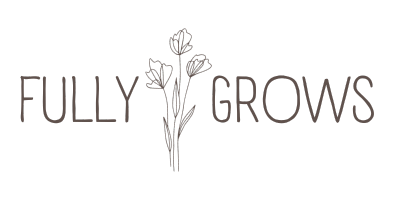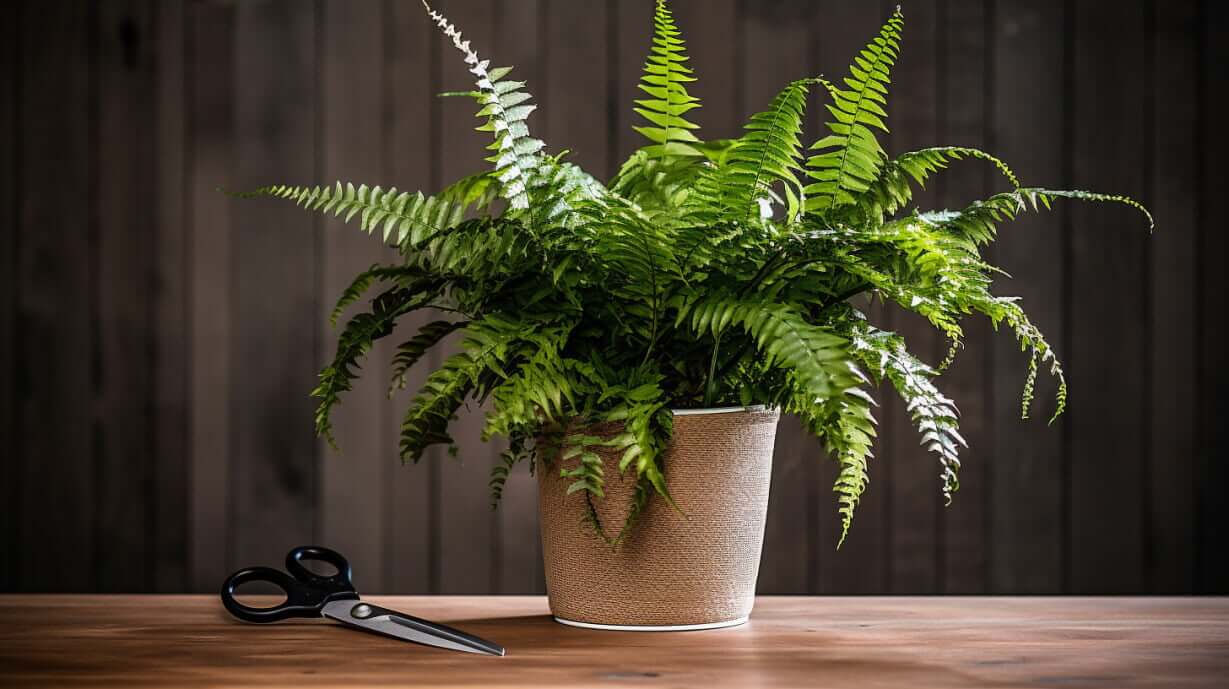Trimming a Boston fern is essential for maintaining its vigor and achieving lush growth. Pruning promotes denser foliage, removes old dead foliage, discolored fronds, and encourages new growth. To ensure effective pruning, you’ll need clean, sharp pruning shears or scissors to make precise cuts.
When pruning your Boston fern indoor plant, it’s important to identify the old fronds that need to be removed. Cut them near the base to allow new bushy growth to emerge. Unsightly stems can also be trimmed to the base to maintain a more uniform appearance.
Severe pruning can be done during spring or summer when repotting the fern. However, it’s crucial not to remove more than one-third of the foliage at once. Pruning too much can cause stress to the plant and hinder its recovery.
Boston ferns should not be pruned in winter as they go dormant during this time. Pruning during this period may disrupt the plant’s natural growth cycle. It’s best to wait until spring or summer when the fern is actively growing.
After pruning, it’s essential to return the fern to its original location and avoid overwatering. Overwatering can lead to root rot and other moisture-related issues. It’s advisable to refrain from fertilizing the fern for a few weeks after pruning to allow it to recover.
When pruning, keep in mind that Boston ferns can be shaped to achieve the desired aesthetic. By selectively removing certain fronds, you can promote denser growth and create a more compact and full appearance.
Key Takeaways:
- Pruning Boston ferns promotes fuller, healthier growth and maintains their vigor.
- Use clean, sharp pruning shears or scissors for precise cuts.
- Remove old fronds near the base to allow new growth to emerge.
- Trim unsightly stems to the base for a more uniform appearance.
- Severe pruning can be done during spring or summer, but avoid removing more than one-third of the foliage at once.
When and How to Trim Boston Fern
Knowing when is the ideal time for pruning and how to trim your Boston fern is crucial for ensuring its overall health and appearance. Pruning is an essential part of caring for these beautiful plants, as it helps maintain their vigorous form and promotes fuller, healthier growth. To achieve the best results, it’s important to understand the timing and techniques involved in trimming. Generally, the best time to prune Boston fern is during spring.
When it comes to timing, the ideal period for trimming a Boston fern is in the spring or summer months, while the plant is actively growing. This is also a good time to repot the fern if needed. Avoid pruning during the winter, as the plant is dormant and may not respond well to the process.
To begin the trimming process, start by using clean, sharp pruning shears or scissors. Start to trim around the edges then work your way back to the base of the fern. Look for side fronds at the base and cut off dead fronds to remove them near the base to allow new growth to come through. Cutting unsightly stems to the base will also help maintain the fern’s aesthetic appeal.
When pruning, it’s essential not to remove more than one-third of the foliage at once, as this can put unnecessary stress on the plant. Take care to maintain the fern’s natural shape and avoid over-pruning. After trimming, return the fern to its original location and be mindful of its watering needs. Overwatering should be avoided, and fern doesn’t require much fertilizer, so it’s best to refrain from fertilizing for a few weeks to allow the plant to recover from pruning.
Summary:
- Pruning Boston ferns is important for maintaining their health and appearance.
- Timing: Trim in spring or summer, avoiding winter pruning.
- Tools: Use clean, sharp pruning shears or scissors.
- Technique: Remove old fronds near the base and unsightly stems to the base.
- Caution: Do not remove more than one-third of the foliage at once.
- After-pruning care: Return the fern to its original location, avoid overwatering, and refrain from fertilizing for a few weeks.
| Brown Leaves | Yellowing Leaves |
|---|---|
| Brown leaves can be caused by uneven watering, overcrowding, or too much contact with the plant. | Yellowing leaves may indicate stress or improper watering. |
Pruning can also be done to shape the fern and promote denser growth. However, it’s important to exercise caution and not go overboard with the trimming. Remember, the goal is to maintain the fern’s natural form while encouraging healthier foliage.
By following these pruning guidelines, you’ll be able to keep your Boston fern thriving and looking its best. Regular trimming will help the plant stay vigorous, prevent overcrowding, and ensure a fuller, healthier appearance. So grab your pruning shears and give your Boston fern the care it deserves!
Proper Care After Pruning Boston Fern
After pruning your Boston fern, it is important to provide the proper care to help it thrive and maintain its lush appearance. Pruning is essential to promote healthier growth and maintain the fern’s vigorous form. To ensure successful recovery, it is crucial to follow these care steps:
1. Repotting: If your Boston fern needs repotting, now is the ideal time to do it after pruning. Choose a slightly larger pot with good drainage to accommodate the plant’s growing roots. Use a well-draining potting mix and gently place the fern in its new home. Ensure that the crown of the plant is level with the potting mix surface.
2. Watering: Proper watering is crucial for the fern’s recovery after pruning. Aim to keep the soil consistently moist but not waterlogged. Water the plant thoroughly until water drains out of the bottom of the pot, and then allow the top inch of soil to dry out before watering again. Avoid overwatering as it can lead to root rot.
3. Fertilization: After pruning, it is best to avoid fertilizing your Boston fern for a few weeks. This allows the plant to focus its energy on recovery and new growth. Once the fern has had time to recover, resume regular fertilization with a balanced houseplant fertilizer diluted to half the recommended strength. Apply the fertilizer every two to four weeks during the growing season.
By following these care steps, you can ensure that your Boston fern recovers well after pruning and continues to thrive. Remember to monitor the fern’s watering needs, provide adequate light, and maintain proper humidity levels. With proper care, your fern will reward you with its lush, healthy foliage and vibrant appearance.
FAQ
How often should I prune or cut back my Boston fern?
Pruning should be done as needed to maintain the fern’s appearance and health. Regular trimming of discolored fronds and unsightly stems can be done throughout the year, but severe pruning should be done in spring or summer during repotting.
What should I use to prune my Boston fern?
Clean, sharp pruning shears or scissors should be used to trim your Boston fern plants. This will ensure a clean and precise cut, promoting faster healing and reducing the risk of disease or infection.
How much foliage I need to trim a Boston fern when pruning?
Care should be taken not to remove more than 1/3 of the foliage at once. Removing too much foliage can cause stress to the plant and hinder its ability to recover. It’s best to prune in moderation and gradually shape the fern over time.
Can I prune my indoors Boston fern in winter?
No, pruning should be avoided during the winter months as Boston ferns are dormant during this time. Pruning can disrupt the fern’s natural resting period and may lead to unnecessary stress or damage.
Should I fertilize my Boston fern after pruning?
It’s best to avoid fertilization for a few weeks after pruning. Pruning can be a stressful process for the plant, and allowing it time to recover before introducing fertilizers will help prevent any potential root burn or nutrient imbalances.







